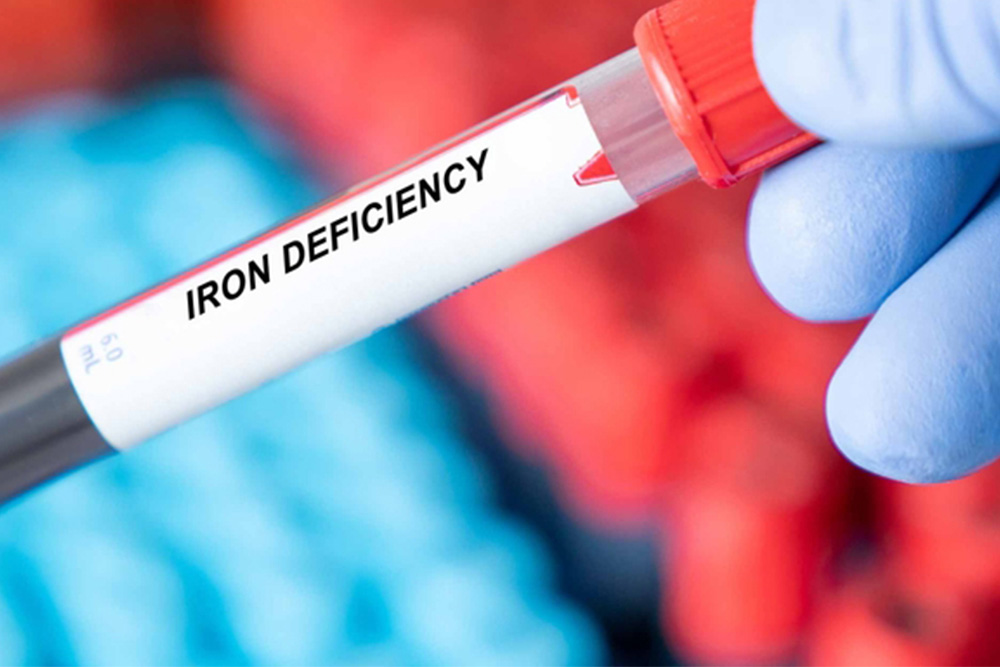Racial Disparities in Anemia Screening Among Pregnant Women

Iron deficiency anemia (IDA) during pregnancy is prevalent in the US, with a rate of 18%. This study aims to investigate the screening practices for anemia among pregnant women at the University of Michigan (UM) and explore potential racial disparities in these practices.
Anemia Prevalence High Among Women and Girls: Urgent Need for Better Screening

Anemia, a common blood disorder affecting millions, is particularly prevalent among women and girls due to various factors such as menstruation, poor nutrition, and underlying health conditions. A 2023 JAMA study revealed that nearly 40% of nonpregnant US females aged 12 to 21 are iron deficient, with 6% developing iron-deficiency anemia. During pregnancy, these risks increase further. Despite its widespread impact, anemia often goes undiagnosed due to vague symptoms and inadequate screening, leading to severe health consequences if left untreated.
Efficient Anemia Supplements: What to Look For?

Anemia, a common condition, requires supplements that are effective, gentle on the stomach, and contain the right ingredients in the correct proportions. With numerous anemia supplements on the market making various claims, it’s important for consumers to identify which ones actually deliver results and are worth the money. Many products lack transparency about their ingredient dosages, leading to potential ineffectiveness. This has led to detailed guidelines on what to look for in a high-quality anemia supplement, emphasizing natural, easily digestible formulations.
Study Reveals Challenges in Treating Iron Deficiency Anemia in Autistic Children

Children with autism spectrum disorder (ASD) often encounter feeding difficulties, which can lead to various nutritional deficiencies, including iron deficiency anemia (IDA). These feeding problems are typically due to behavioral issues and food aversions common among children with ASD. Pediatric nurse practitioners play a crucial role in assessing these children for mineral deficiencies and need to be vigilant about the potential complexities in managing IDA in this population.
Diet Rich in Heme and Non-Heme Iron Enhances Treatment for Iron Deficiency Anemia

Incorporating specific foods into the diets of people with iron deficiency anemia can help increase red blood cell counts and hemoglobin levels. Foods rich in heme iron, such as meat, poultry, and fish, are highly effective as they are well absorbed by the body. Additionally, plant-based sources of non-heme iron, including dark green leafy vegetables, nuts, and legumes, also play a crucial role despite being less efficiently absorbed.
Managing Anemia: Diagnosis, Treatment, and Collaboration

Anemia, marked by low red blood cell count or hemoglobin levels, affects millions globally, primarily due to iron deficiency. Diagnosis involves routine exams and complete blood count (CBC) testing, with further assessments necessary to pinpoint the type and cause. Microcytic anemia, characterized by small red blood cells, often indicates iron deficiency and requires additional tests like serum ferritin. Normocytic anemia, featuring normal-sized cells, may stem from chronic disease or acute bleeding, prompting evaluations like reticulocyte counts. Macrocytic anemia, with larger cells, is typically linked to deficiencies in vitamin B12 or folate, often associated with malabsorption or alcoholism. Treatment targets the underlying cause, such as iron or vitamin supplementation.
Understanding Anemia: Symptoms, Causes, and Importance of Timely Intervention

Anemia, characterized by a deficiency of healthy red blood cells or hemoglobin, can lead to fatigue, weakness, and shortness of breath due to insufficient oxygen delivery to tissues. Its various forms stem from diverse causes, spanning from short-term to chronic, mild to severe. Often serving as a harbinger of underlying health issues, anemia necessitates prompt attention and treatment, which may involve supplements, medical procedures, or dietary adjustments.
Limited Progress in Combating Anemia, Multifaceted Approaches Needed

A study noted that, despite efforts, progress in reducing anemia has been slow, with only a slight decrease in prevalence over two decades. The prevalence in women of reproductive age even increased slightly between 2012 and 2019. Anemia’s complexity arises from various causes, including nutritional deficiencies, infections (such as malaria and HIV), inherited blood disorders, and factors related to women’s reproductive biology.
Anemia: Filling the Data Gaps to Better Help Children and Women

A study looked at anemia as a major public health concern, especially affecting young children, menstruating adolescent girls and women, and pregnant women, as well as related data needs. The most common underlying physiological mechanisms of anemia, researchers noted, are ineffective erythropoiesis (ie, inadequate production of erythrocytes), hemolysis (ie, erythrocytes are destroyed), and blood loss. Iron deficiency is the most common cause of anemia globally.
New Strategies Needed to Combat Widespread Anemia, Especially in Women

Researchers analyzed iron deficiency (ID) and iron deficiency anemia (IDA)–common health issues affecting two billion people worldwide, particularly prevalent among women of reproductive age. Traditional treatment has relied on oral iron supplementation, which often yields less-than-ideal results, and there is a growing concern about the number of babies born with ID due to inadequate maternal iron levels.

